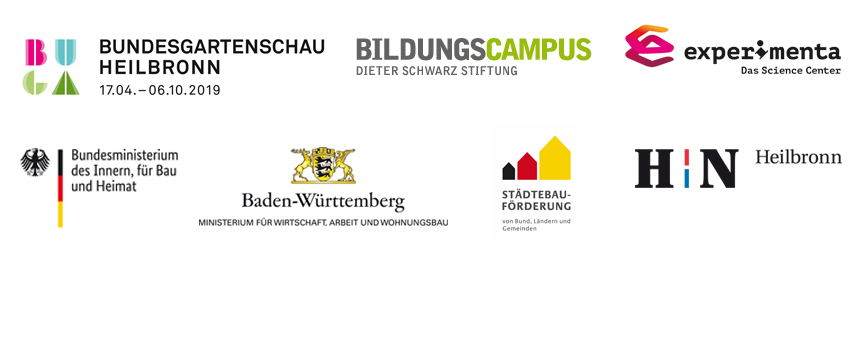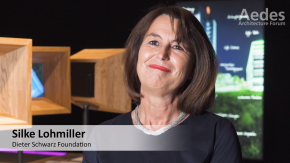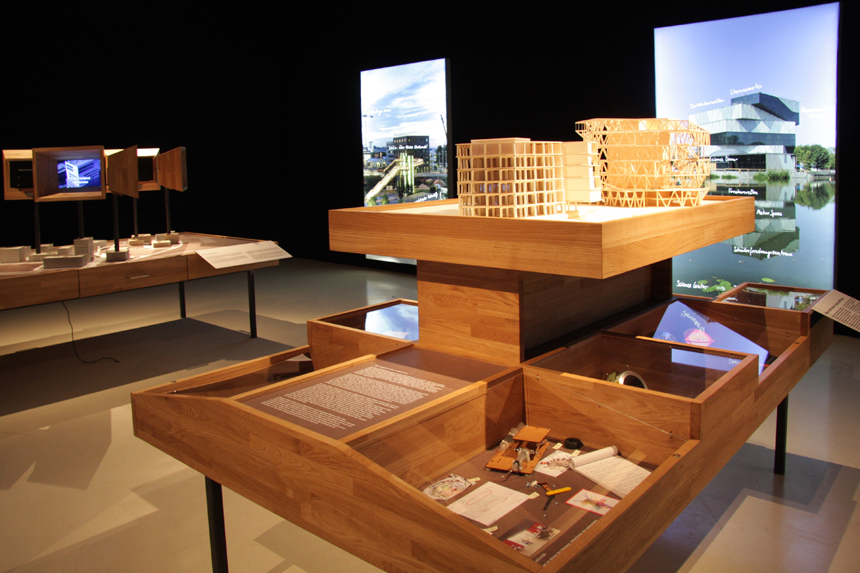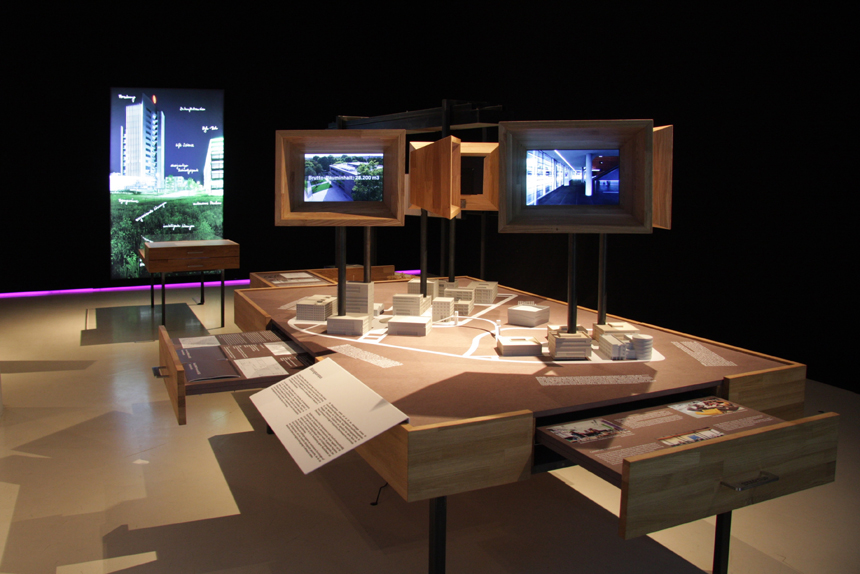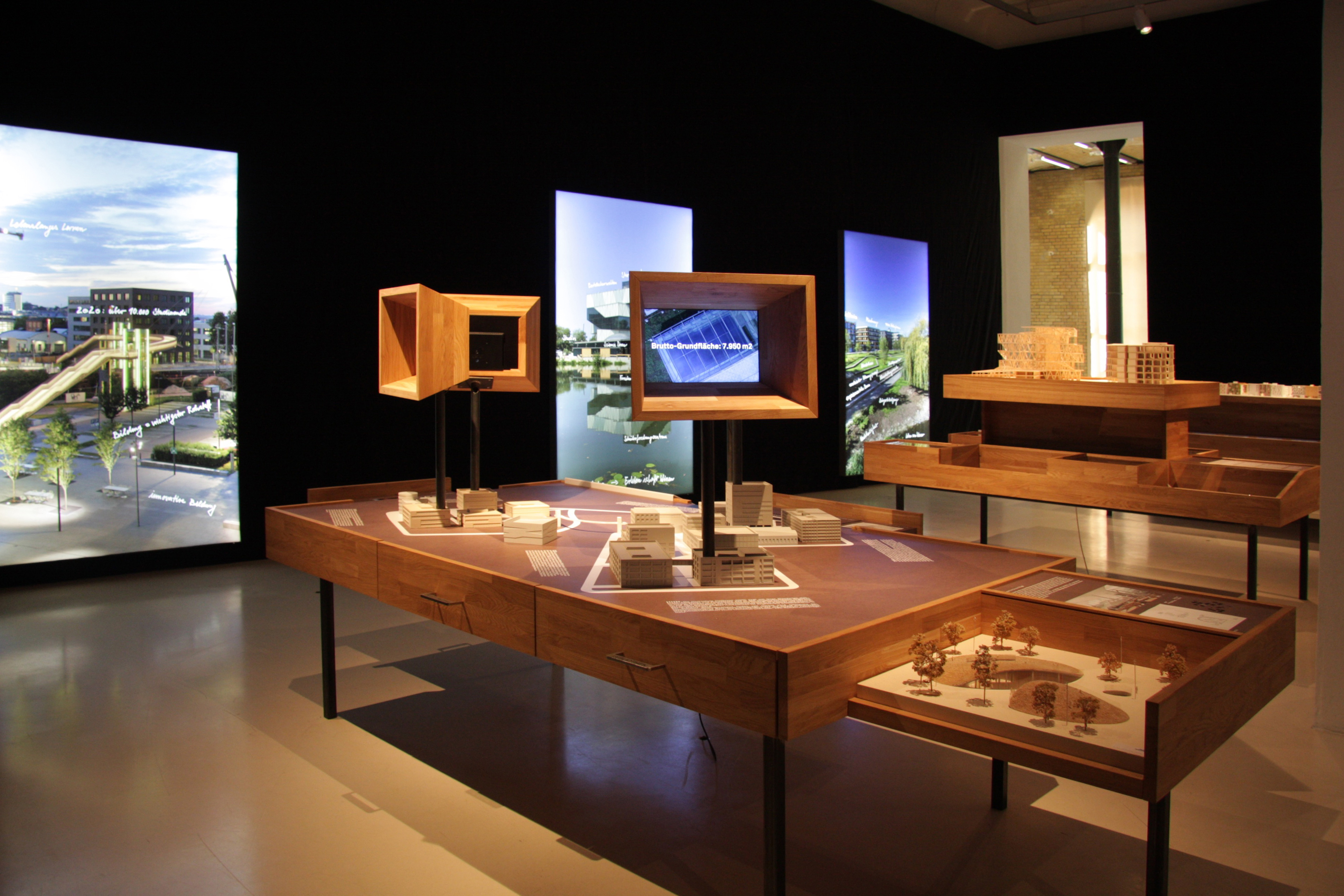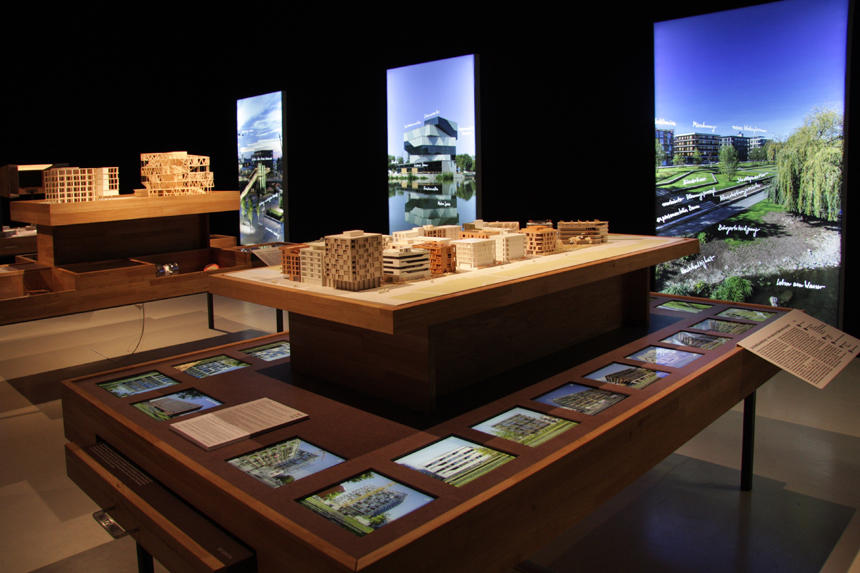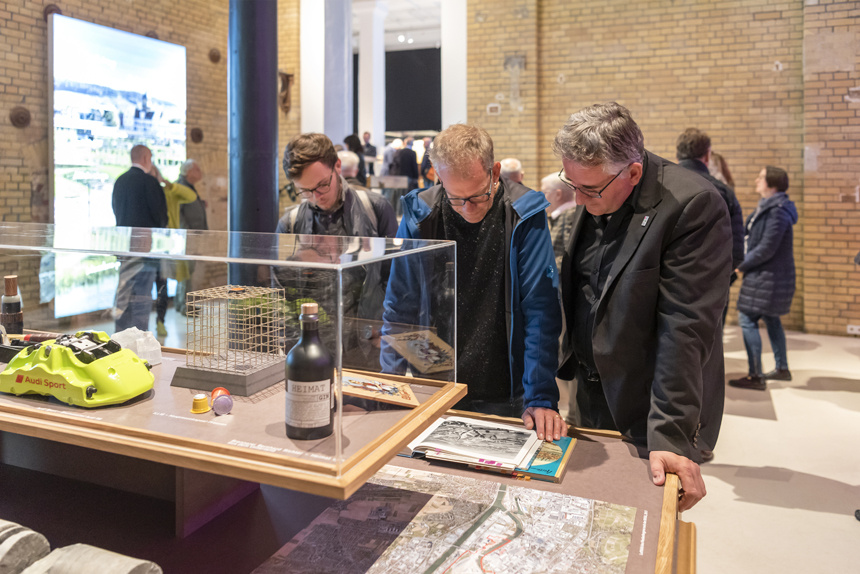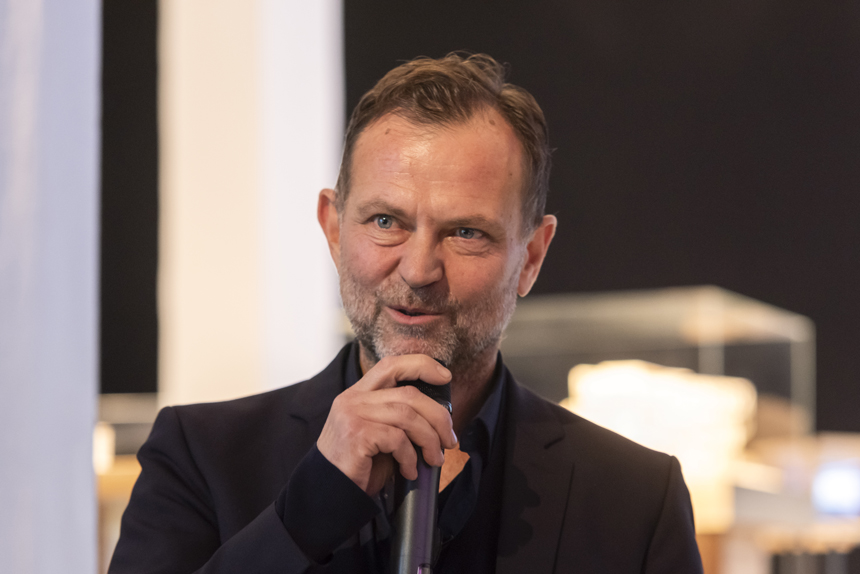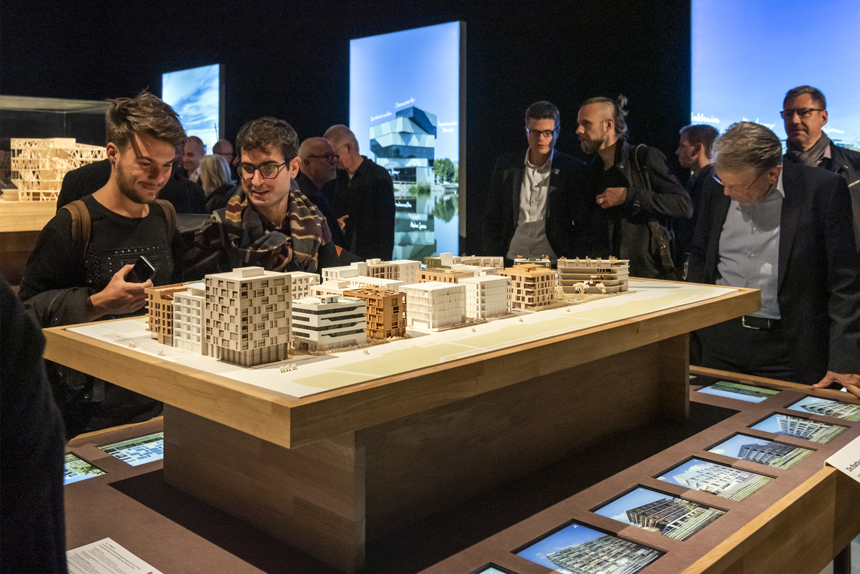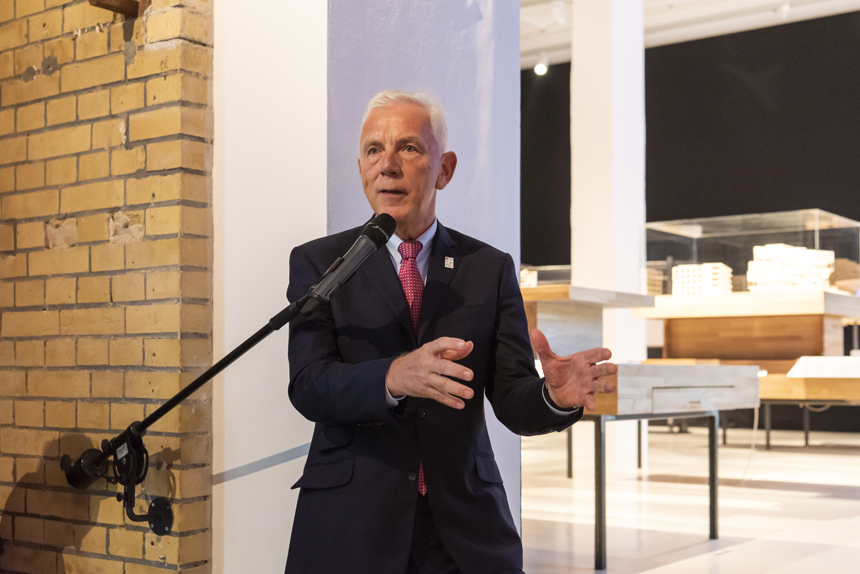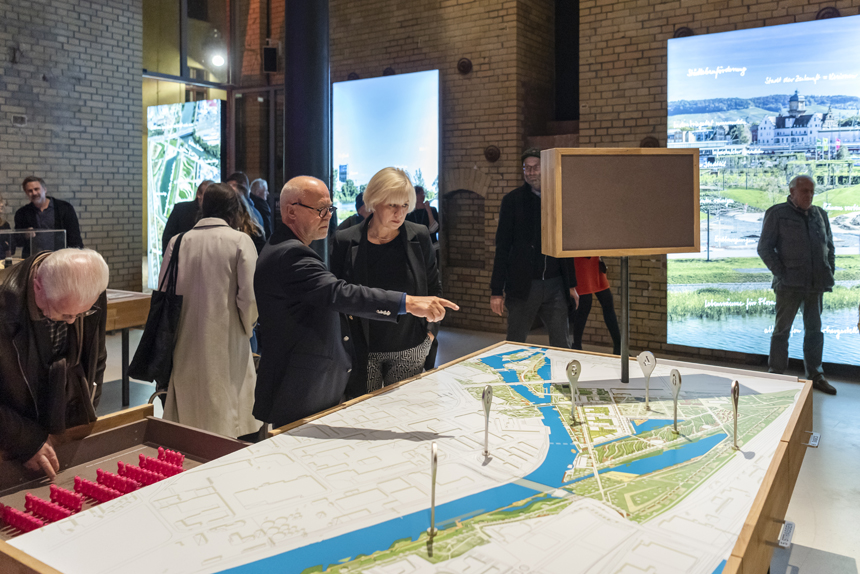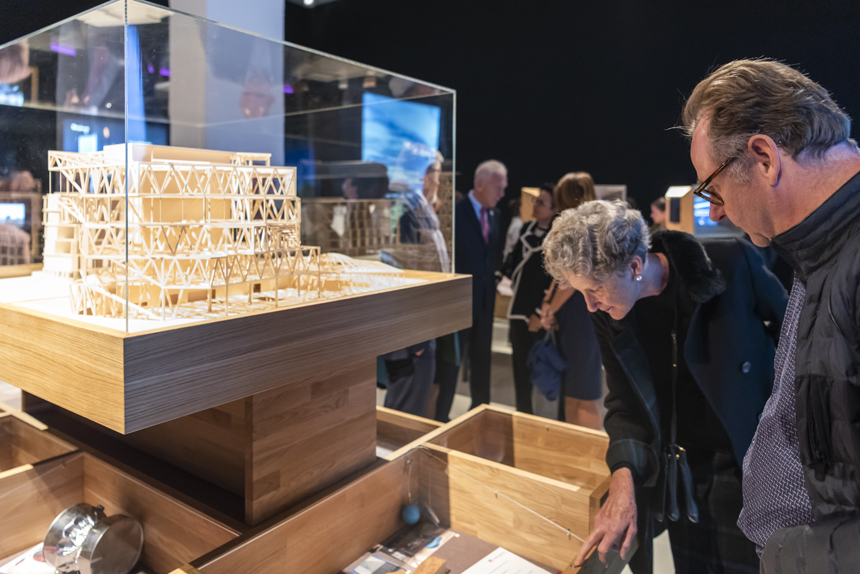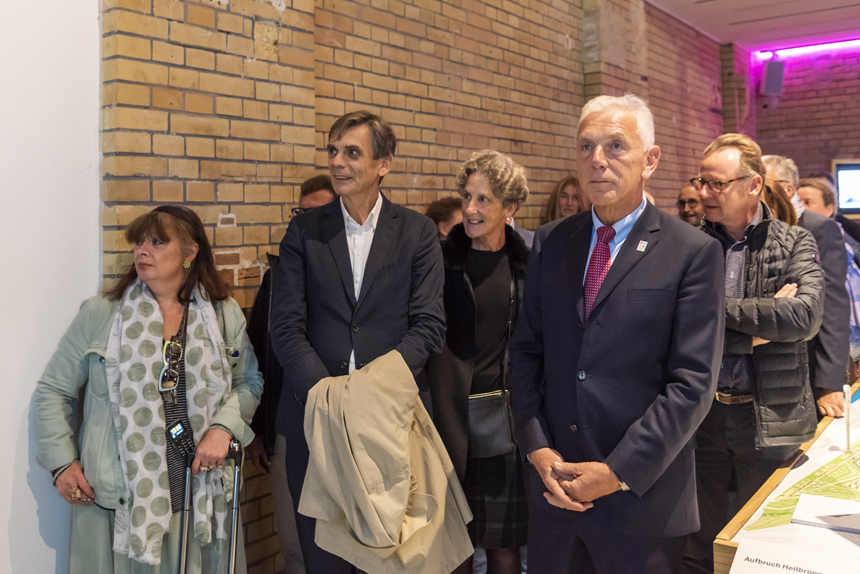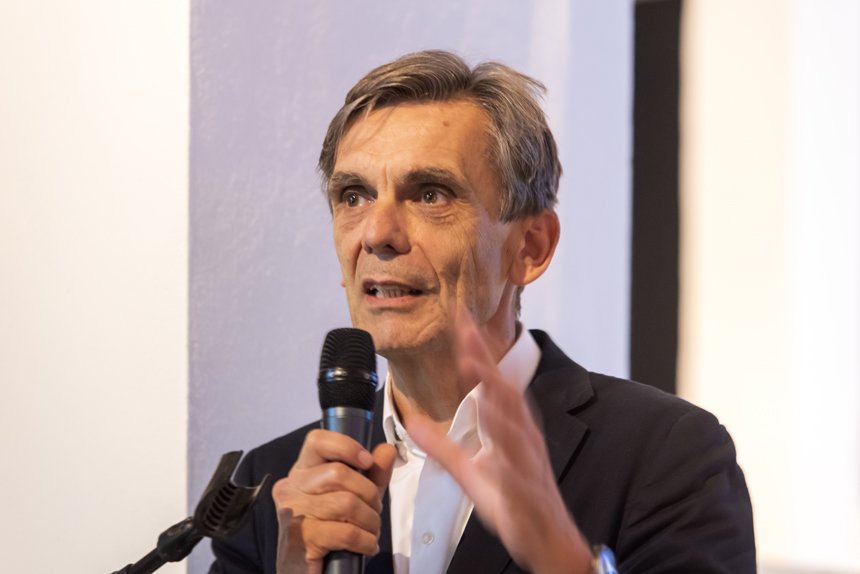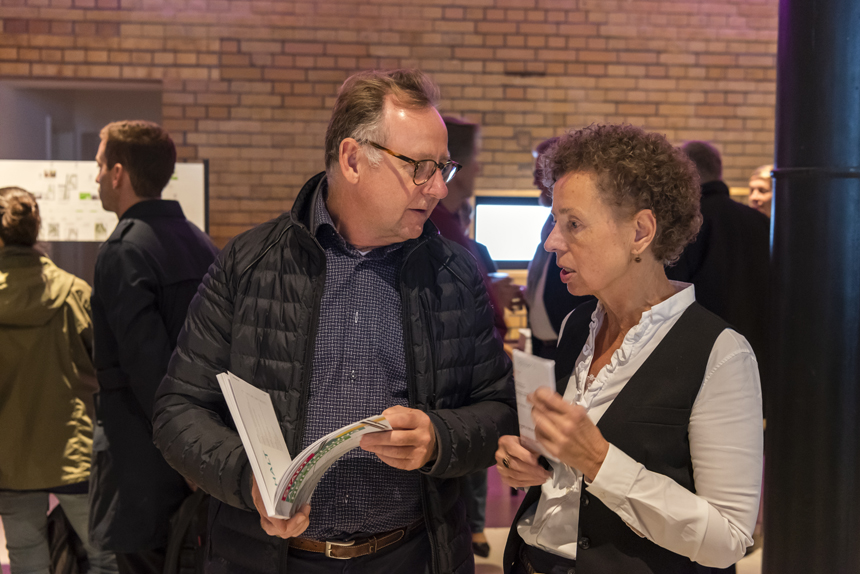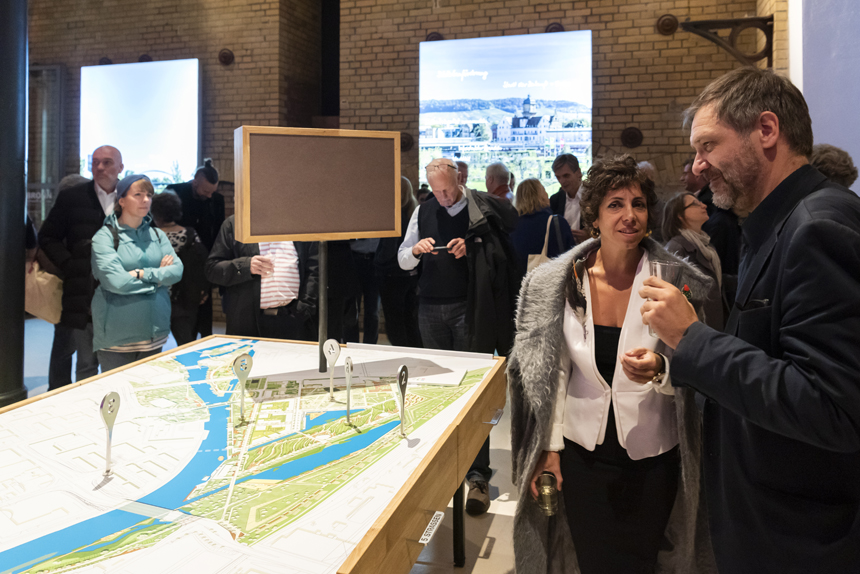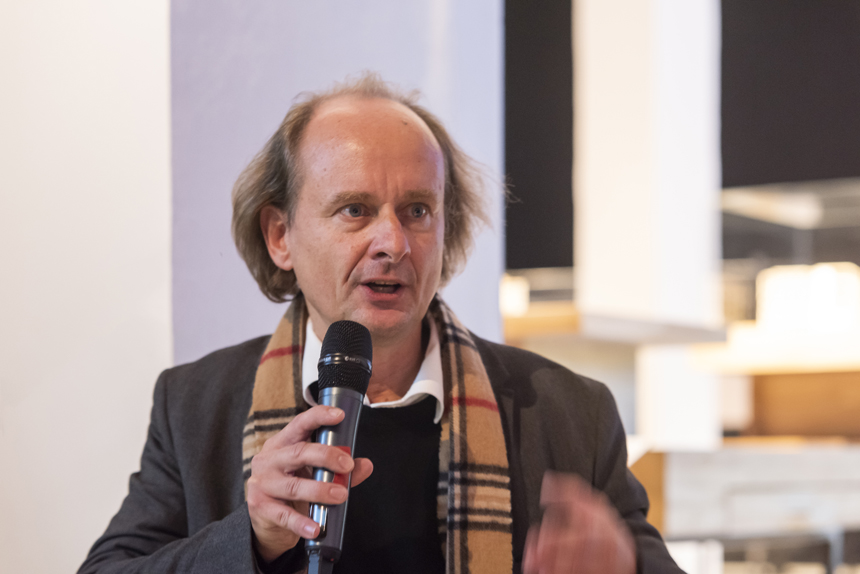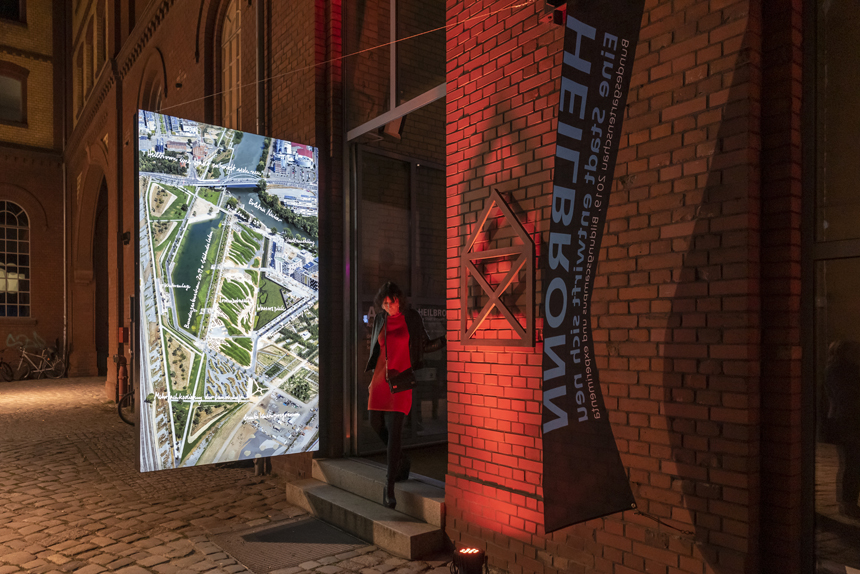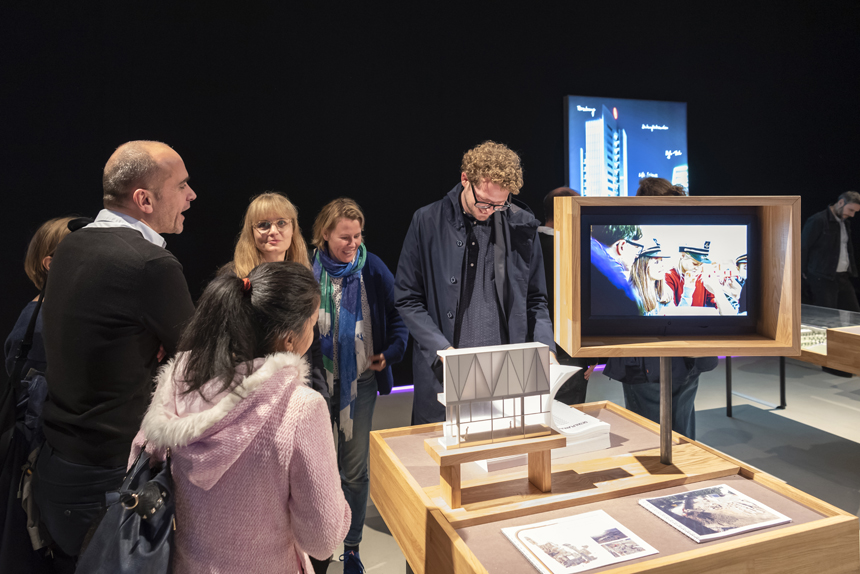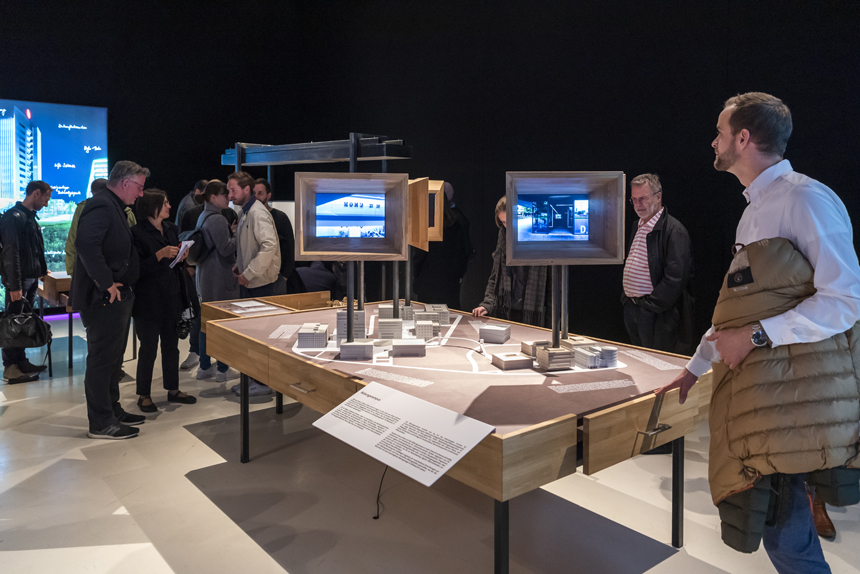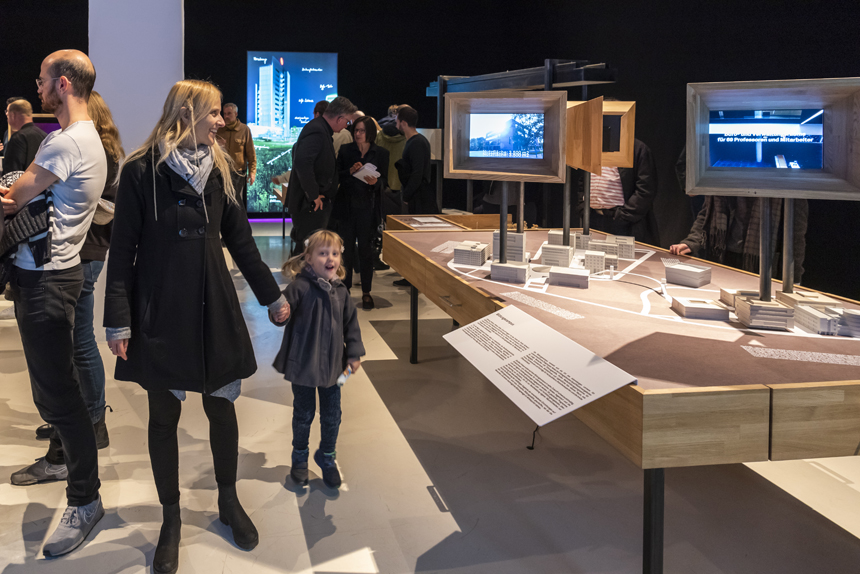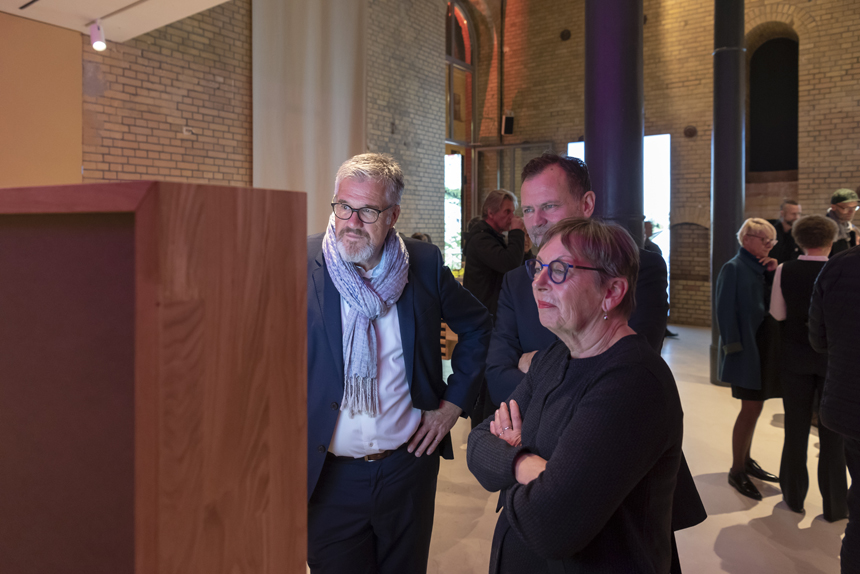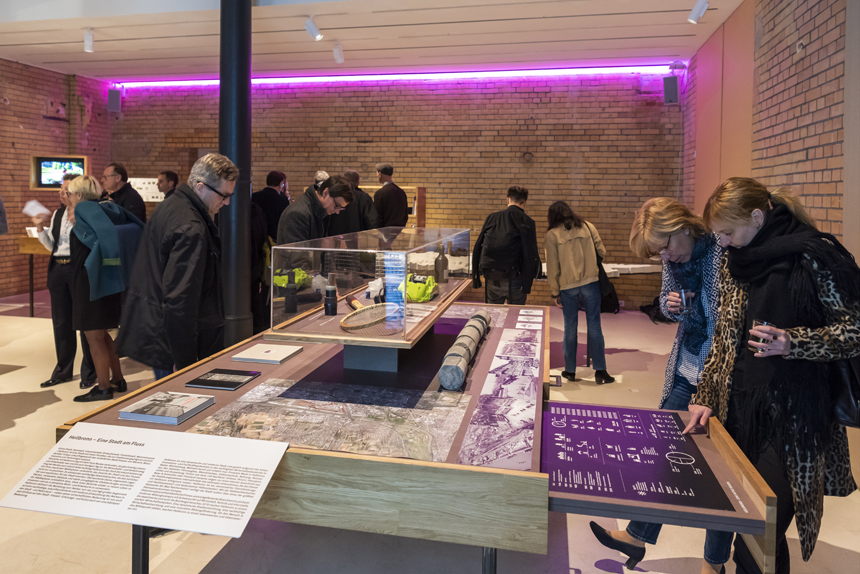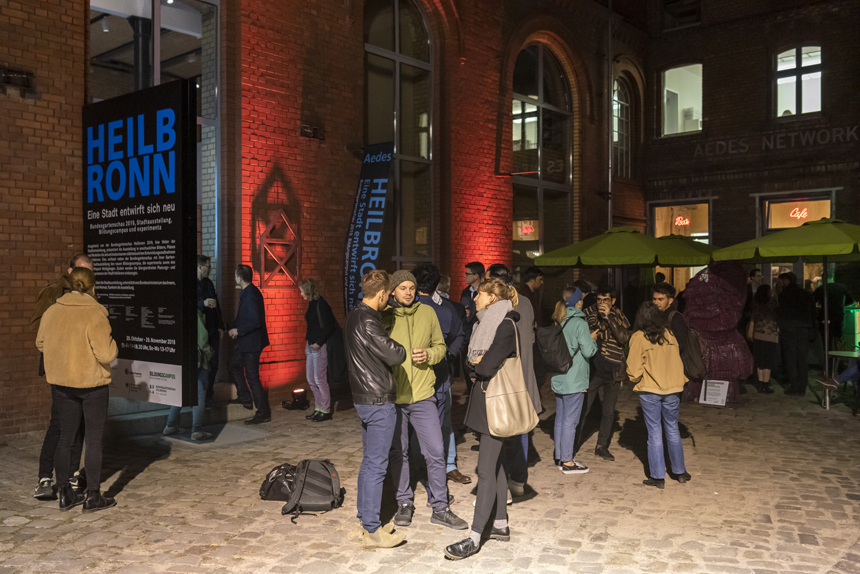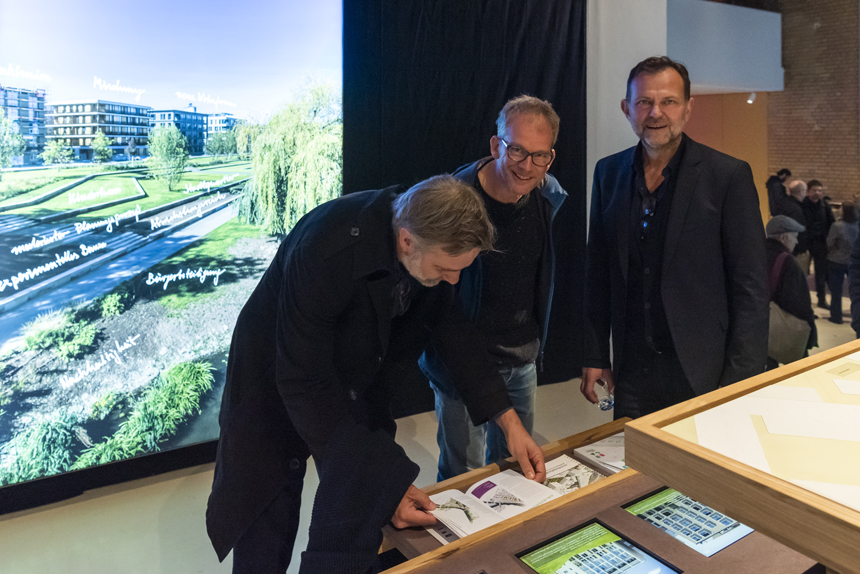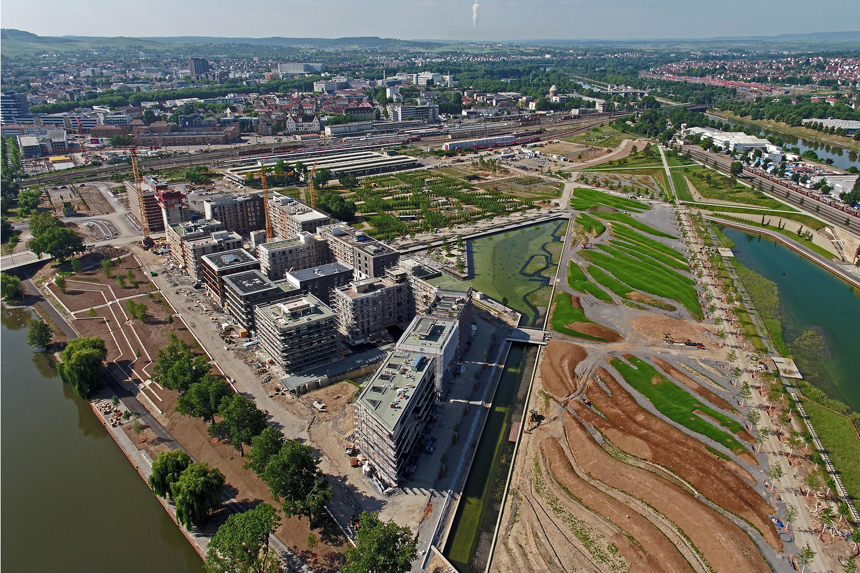The city of Heilbronn in Baden-Württemberg is considerably investing in its urban development and educational future. With its commitment to urban, landscape, and architectural quality, Heilbronn has succeeded in harnessing the powerful dynamics of the Bundesgartenschau (BUGA) Heilbronn 2019, a federal garden show, as a driving force to promote sustainable urban development that places people’s needs at its heart.
The exhibition shows the three focal points of its urban development strategy, which manifest Heilbronn’s ecological, digital, and mobile reorientation: the Neckarbogen district on the grounds of the Bundesgartenschau, the Bildungscampus (education campus) of the Dieter Schwarz Foundation, and the experimenta science center.
Emerging from long and intensive negotiations between the city and the investors, the development of a derelict area between the Old Neckar and the Neckar Canal has succeeded in creating a new urban quarter with high quality amenities within walking distance of the city center. This urban renewal is being funded with state and federal funds through the urban development promotion program of the Ministry of Economics, Labor and Housing of Baden-Württemberg.

left: City Exhibition © Bundesgartenschau Heilbronn 2019 GmbH | right: Wooden Pavilion © Bundesgartenschau Heilbronn 2019 GmbH / ICD Institut für Computerbasiertes Entwerfen und Baufertigung
The first part of the exhibition showcases this new city quarter, where the heart of the BUGA is currently located. The Neckarbogen city quarter was integrated into the BUGA as a building block of a ‘City Exhibition’ – together with its first 800 inhabitants. This will enable all garden show guests to experience how excellence in architecture and urban planning, in combination with landscape architecture and innovative technology, can shape a residential district in a major 21st century city, when all stakeholders work together constructively. Heilbronn was able to reestablish the area’s scenic charm by redirecting a main road away from the Neckar river and the former harbor basin. Achieving social balance in the new community has been just as important as the use of sustainable and resource-conserving building methods. 51% of the apartments are rentals, with a high proportion of subsidized housing. The power supply of the residential buildings is ensured by combined energy systems with cogeneration (CHP), a solar thermal system, and photovoltaic, with intermediate storage tanks. The lakes in the parks are used for water management in the quarter and for the irrigation of trees and plant beds.
By 2040, approximately 3,500 Heilbronn residents will live in this green residential quarter close to the city center on the Neckar River. For the first time in its almost 70-year history, the BUGA thus serves as both as a horticultural exhibition and a city exhibition. High quality garden design and urban architecture will be hosted by the BUGA for 173 days. Under the motto ‘Blooming Life’ it invites visitors to experience a multifaceted garden exhibition and an inspiring city exhibition from 17 April to 6 October 2019.

left: River Port | right: Riverbank Park 'Wohlgelegen' © sinai Landschaftsarchitekten
The second part of the exhibition presents the rapidly growing Bildungscampus (education campus) of the Dieter Schwarz Foundation, which houses various state and private universities and other educational institutions on its premises. Since the first construction phase on a former industrial site was inaugurated in 2011, the educational campus has been continuously expanded by the Stuttgart-based architectural firm Auer & Weber, in order to provide these institutions with modern, needs-oriented facilities and to create an optimal atmosphere for learning and working. By the end of 2019, the five-hectare complex near the BUGA site will feature lecture halls and administration buildings, an underground cafeteria, and a common library shared by all of the universities, offering individually designed spatial experiences. Student housing, sports facilities, and further research institutions are planned for the future as a further investment in this vibrant and diverse place of learning and living.

left: experimenta © Sauerbruch Hutton | right: education campus © Auer Weber / Dieter Schwarz Stiftung
The third part of the exhibition presents the largest science center in Germany: the ‘experimenta’. The conversion and extension of Hagenbucher Speicher, an austere brick warehouse built in 1936 on a Neckar island, is based on the winning submission to an architectural competition in 2007 by the Berlin-based architectural firm studioinges.
The new construction of the 'experimenta' is currently being realized by Sauerbruch Hutton Architects from Berlin after winning a competition in 2013. The building’s striking architecture is characterized by a dynamic glass and steel structure. Four gallery spaces with over 270 interactive exhibits, four glass creative rooms, and three special exhibition spaces form the spatial program for an extensive and interdisciplinary range of hands-on experimental activities. A highlight will be the Science Dome with its unique combination of theater and planetarium, boasting a 180° rotating auditorium and a 700 m2, 360° dome screen for 3D, laser, and experimental shows. Together with the extensive range of activities in the existing building and its nine state-of-the-art laboratories, a unique universe of knowledge and experience is being created across a total area of 25,000 m2, and due to open in spring 2019.
The exhibition installation at Aedes, developed by Oficinaa in Ingolstadt, presents the individual projects in vivid pictures, plans, and models. The greater planning and project development by the city is also presented, from the initial concept study in 1992/93 to the present day. A film about the Heilbronn City Exhibition – supported by the Federal Ministry of the Interior, Building and Community – accompanies the exhibition.
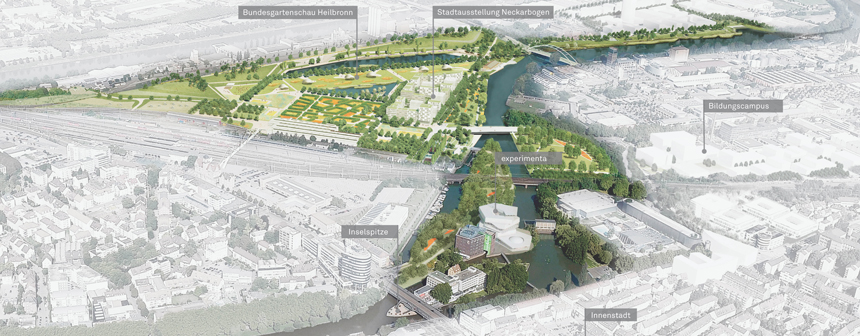
Main BUGA Site © Bundesgartenschau Heilbronn 2019 GmbH
IN COOPERATION WITH
Bundesgartenschau Heilbronn, Bildungscampus Dieter Schwarz Stiftung, experimenta, Bundesministerium des Innern, für Bau und Heimat, Ministerium für Wirtschaft, Arbeit und Wohnungsbau Baden-Württemberg, Städtebauförderung, Stadt Heilbronn
